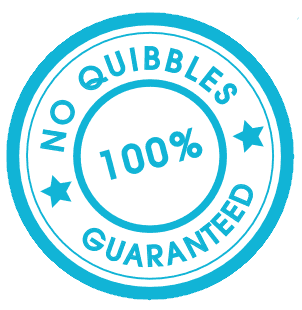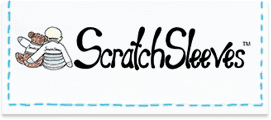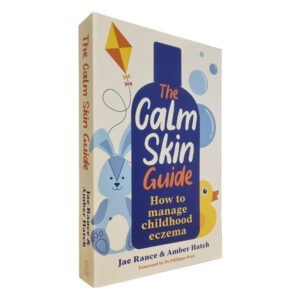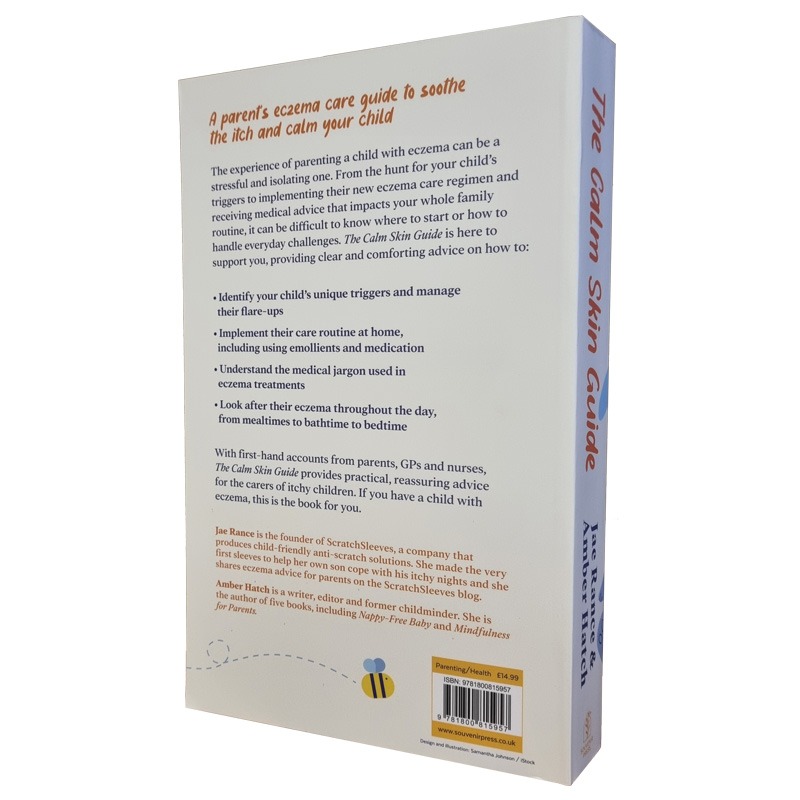Identifying eczema triggers: How to be an eczema detective



One of the first pieces of advice that any eczema parent hears is that they should identify any triggers for their little one’s eczema. But it doesn’t take long to realise that there are hundreds of possible triggers. How on earth do you go about finding the needle in the haystack? We’ve put together this simple guide to being an eczema detective to help you get started.
Step one: Obtain information
The first step in identifying eczema triggers is collecting as much information as possible. Most of this information will come from observation. But you can get some pointers on what to observe by talking to family members. Allergies and sensitivities often run in families. It’s worthwhile asking your parents and siblings if they avoid any specific triggers. Or if they remember you having any sensitivities as a child. I hadn’t realised that I had eczema as a baby until I asked my mum about my son’s eczema.
When it comes to observation, you are looking for patterns in the waxing and waning of your child’s eczema, both the visible signs and the scratching. Eczema often itches like billy-ho before there is any visible sign of it. Does it seem worse after eating particular foods or going to particular places? Is there a pattern to where or when the eczema is occurring? If your child’s eczema is localised, is there something in particular that touches that area? In our itchy son’s case, his eczema was particularly bad on his face, especially around his hairline. Switching to a genuinely gentle shampoo (as opposed to one that said ‘gentle’ on the label) made a huge difference.

Common eczema triggers to look out for
- Soaps and detergents. Both in toiletries and around the home, including in laundry. Read more about eczema friendly laundry
- Clothing. Synthetic fabrics and wool tend to itch and irritate the skin as can getting too warm. You can find top tips here.
- Contact allergens like latex (found some elasticated fabrics), preservatives (found in most toiletries), fragrances (found in laundry detergents and toiletries) and metals (especially nickel alloys). You can read more about contact dermatitis here.
- Changes in temperature. Cold weather combined with central heating is especially bad for eczema sufferers, whereas sunshine is usually helpful.
- Stress. Even very young children will pick up on the stress being carried by their carers. Stress is a well documented eczema trigger.
- Airborne allergies. Symptoms on the face are common in babies and toddlers and are not usually related to airborne allergies. But in older children this pattern is often related to airborne allergens, especially if the eczema is around the eyes. Common culprits are pollen and pet dander.
- Teething and illness. Both of these put pressure on a child’s body and can result in an eczema flare up. Eczema flare-ups often appear before any new teeth or obvious symptoms. More about eczema and teething here.
- Food. Especially if the eczema is associated with reflux, colic, poor weight gain or other digestive issues. Milk, egg, wheat, soy, and peanut account for about 75% of the cases of food-induced eczema. Most reactions to food will appear within a few hours, but some can take much longer. Some acidic foods, like tomatoes and citrus fruits can also irritate the skin directly.
Keeping a basic diary of your child’s activities and the state of their skin can help to identify possible triggers. Simply recording things like the weather and what your child has done during the day may well help you to spot possible trends and triggers for further investigation. You can find our diary template here.
Step two: Line up your suspects
Once you have identified a list of possible eczema triggers, put them in order of the most likely suspects and make a plan to start to gather evidence for each suspect in turn. Don’t be tempted to investigate more than one suspect at a time. This is likely to make it harder to identify the true villains in the long run.
If you suspect a number of toiletries are aggravating your child’s skin, read the labels to see if there are any common ingredients. Preservatives including methylisothiazolinone or any ingredient ending -paraben are known eczema triggers.
You have two options for working out whether each suspect is indeed a villain. You can either eliminate the suspect and see if your child’s skin improves; or, if your child’s skin is in good shape, you could ‘challenge test’ with the suspect and see if your child’s skin gets noticeably worse. Either way, you will need to record the before and after evidence so you can confirm your suspicions confidently.
Step three: Record the evidence
Confirming your suspicions is just a case of testing each possible eczema trigger you have identified. Then observing whether it does indeed have an impact on your child’s skin. Sounds simple enough. The difficulty comes in avoiding confirmation bias (aka wishful thinking). The key is recording the evidence so that you can compare the before and after data dispassionately. There are a number of simple tools you can use:
Photos
Photos are an obvious choice and can work really well. However, the quality of lighting can really affect how clearly any colour changes appear. Try to take your ‘evidence photos’ using the same lighting conditions every time. Using the flash on your camera for every shot can help. From experience, I’d suggest taking photos before the emollient goes on. The flash shines on greasy skin, often obscuring the skin all together, and the emollient gets all over your phone/camera.Colour charts
This is going to sound a little odd but trust me on this. The colour strips from the paint mixing station at your local DIY store are a really effective (and free) way to accurately monitor the inflammation of your child’s skin. Find the strip(s) closest to the tone of your child’s healthy skin. This colour can now act as the base point for your observations. You should be able to match any inflamed skin to the incremental colour gradations giving you an improvised (but consistent) measure of redness.Severity scoring systems
There are a number of systems that can be used to measure eczema severity using numerical scores. These scores can be useful in tracking waxing and waning in your little one’s eczema. SCORAD and EASI are probably the best known (and best validated). These were designed to be used by the medical profession and can be complicated to use. However, there are online calculators and apps that can help. PO-SCORAD, is a patient friendly version of the SCORAD scale. SCORAD and EASI give a snapshot of eczema severity. However, they tend to understate severity for darker skin tones as they both use redness as an indication of inflammation. POEM and RECAP are simpler, patient friendly scoring systems that looks back over the previous week, these systems have versions designed specifically for children. Scoring your child’s eczema before and after any changes you make will give you good evidence as to whether they have been effective.Eczema tracking apps
You won’t be surprised to know that there’s a number of smartphone apps that can help with tracking eczema symptoms. These typically allow you to record eczema using photos and have a severity scoring system to record symptoms. EczemaWise uses PO-SCORAD, My Eczema Tracker uses POEM and RECAP and iControl uses yet another system, PEST, which just asks how the patient is feeling about their eczema. As with all apps, check where your data is stored and who has access to it. Some of the apps also enable you to record treatment and download your data.Pencil and paper
Every child is different and you may find that the tracking apps and scoring systems don’t work for you. In which case, old fashioned pencil and paper may well be the easiest solution. Try to record data systematically, so that it is easy to compare days. Our diary template may be enough for your needs. If not, there are plenty of printable symptom tracker templates available online if you need more inspiration.
Step four: Test your conclusions
Once you have identified a possible eczema trigger, it’s important that you test your conclusions. Eczema is such a variable condition with so many possible triggers that it is impossible to be completely sure that your initial investigations weren’t confounded by something completely out of your control like teething, illness or even parental stress. Pick a time when your little one’s skin is relatively well controlled (and when you have the bandwidth to deal with possible flare-up) and introduce the suspected trigger to confirm that their skin does indeed react. If it’s a contact reaction, try exposing just one arm to the suspected trigger. You’ll be able to see if there is a clear difference between the exposed and unexposed arm.
Suspected food triggers: Testing your conclusions is especially important for food triggers because completely eliminating foods has been shown to increase the risk of developing potentially fatal food allergies, so should only be done if absolutely necessary. If you suspect a food is aggravating your child’s eczema you should contact your GP for further advice as reactions to food can be cumulative. Your evidence from Step 3 will be really useful here.
Here at ScratchSleeves, we don’t just write about our family’s experiences of living with eczema. We also manufacture and sell our unique stay-on scratch mitts and PJs. We now stock sizes from 0-adult years in a range of colours and styles. For more information visit our shop.
The Calm Skin Guide
Love our blog? It's also available in book format with:
- First hand accounts from parents & medical professionals
- Easy navigation
- Comprehensive index
- Additional material
Signed copies available at no extra cost
Written by:
Interesting article? Don't keep it to yourself...
Read next...
You may also find helpful...
Quick buy


Multi Buy Discount

Spend between £30 - £60 and save 5%
Spend between £60 - £120 and save 10%
Spend over £120 and save 15%
Discount automatically applied at checkout
No Quibbles Guarantee

ScratchSleeves abide by a no quibbles guarantee.
Free UK Postage

Free packing and postage on all UK orders. For overseas orders to Europe postage is from £3.50, to USA is £6.50 and to the rest of the world, from £3.75.






